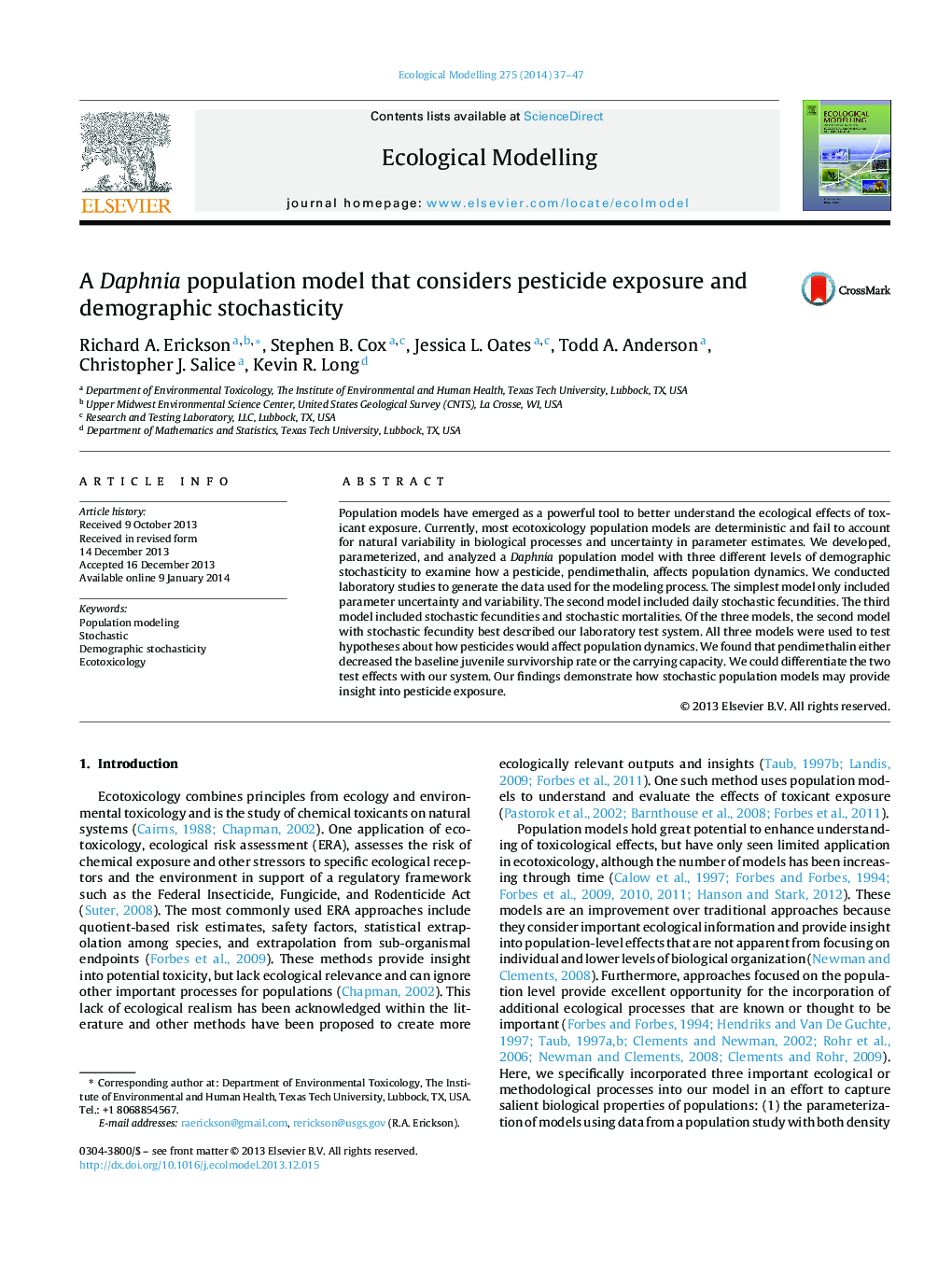| Article ID | Journal | Published Year | Pages | File Type |
|---|---|---|---|---|
| 4376001 | Ecological Modelling | 2014 | 11 Pages |
•We created three stochastic population models to understand how pesticide exposure affects populations.•These models were parameterized using data from laboratory studies.•We found that pesticides affected the population dynamics.•The models with parameter uncertainty and stochastic offspring production performed better than the model with stochastic mortality.
Population models have emerged as a powerful tool to better understand the ecological effects of toxicant exposure. Currently, most ecotoxicology population models are deterministic and fail to account for natural variability in biological processes and uncertainty in parameter estimates. We developed, parameterized, and analyzed a Daphnia population model with three different levels of demographic stochasticity to examine how a pesticide, pendimethalin, affects population dynamics. We conducted laboratory studies to generate the data used for the modeling process. The simplest model only included parameter uncertainty and variability. The second model included daily stochastic fecundities. The third model included stochastic fecundities and stochastic mortalities. Of the three models, the second model with stochastic fecundity best described our laboratory test system. All three models were used to test hypotheses about how pesticides would affect population dynamics. We found that pendimethalin either decreased the baseline juvenile survivorship rate or the carrying capacity. We could differentiate the two test effects with our system. Our findings demonstrate how stochastic population models may provide insight into pesticide exposure.
